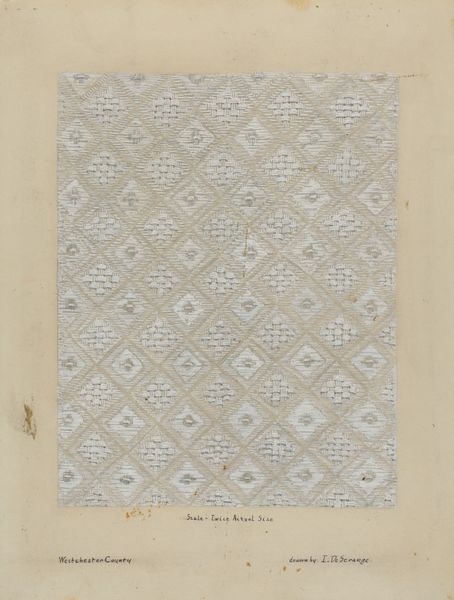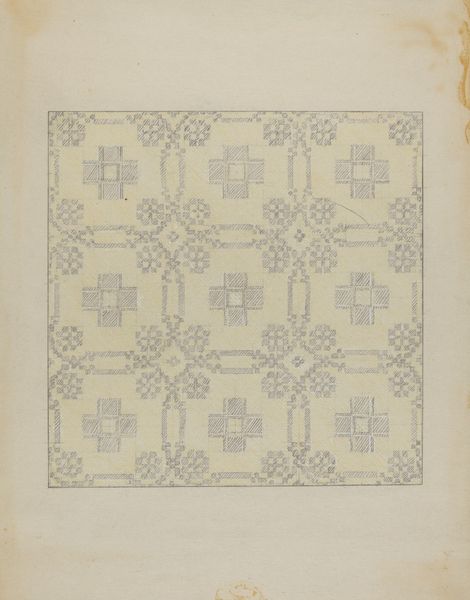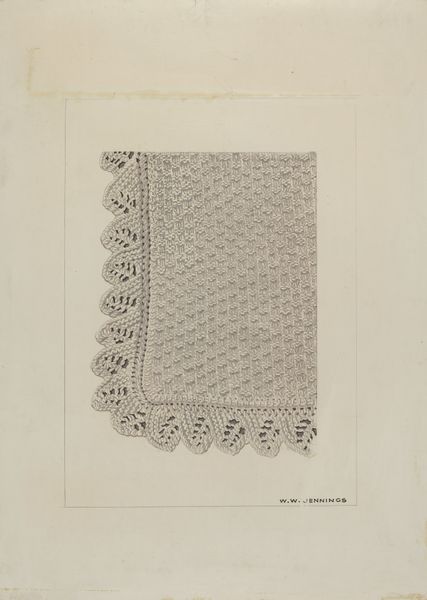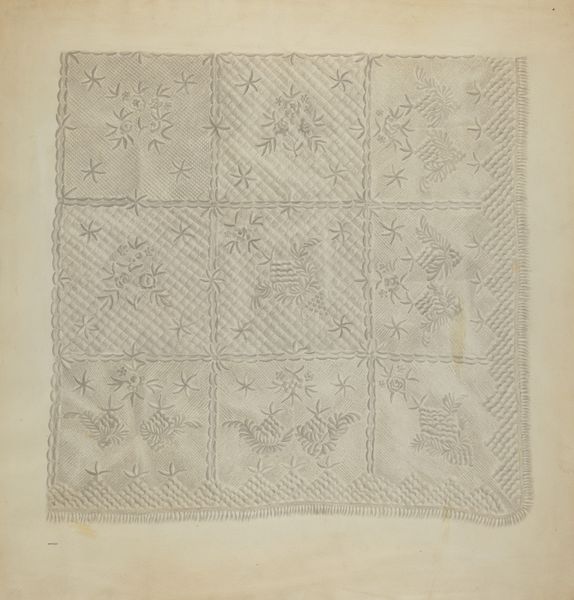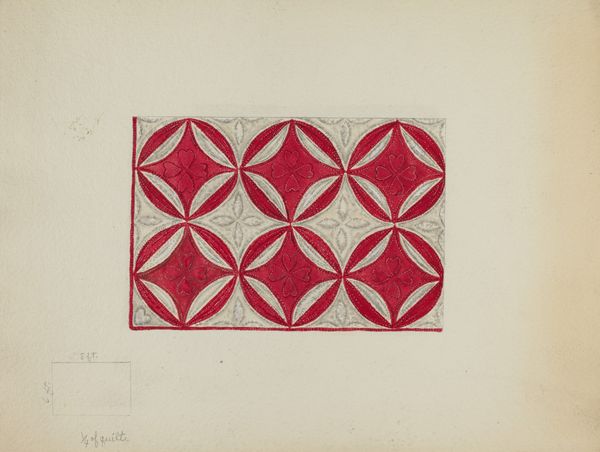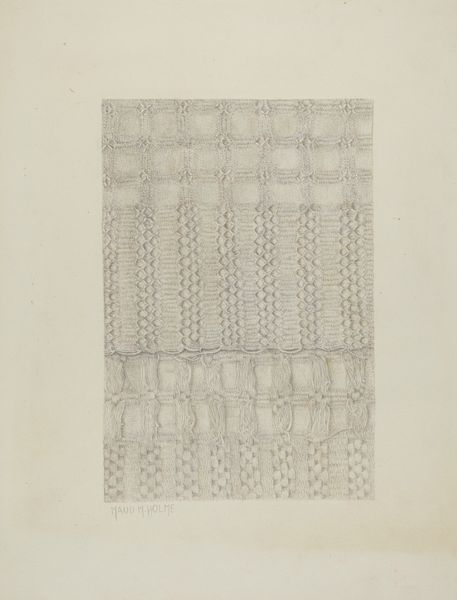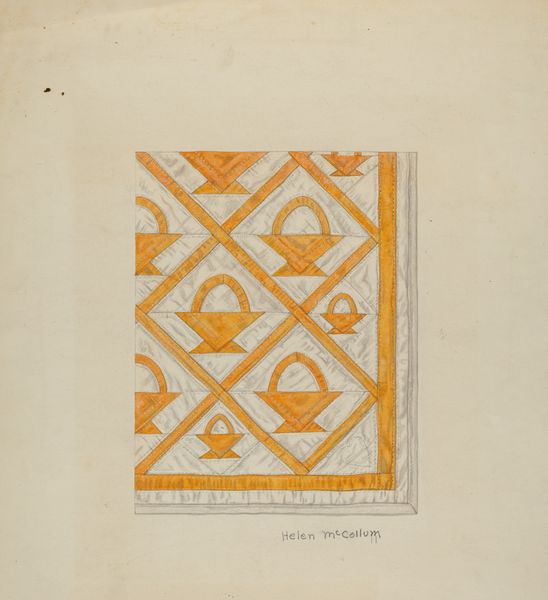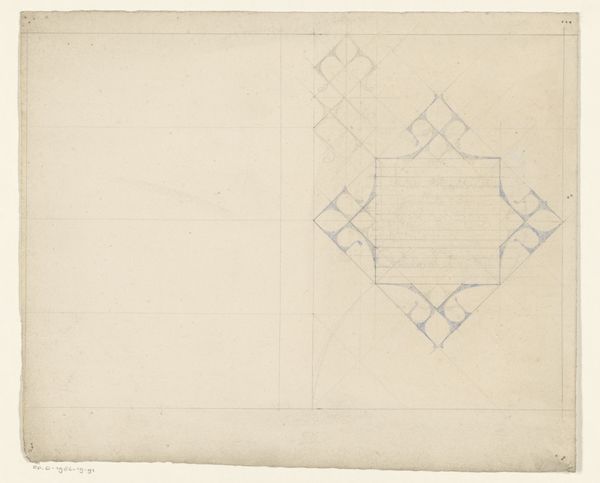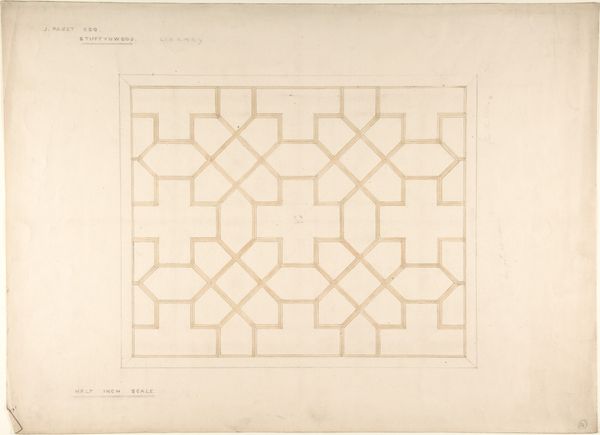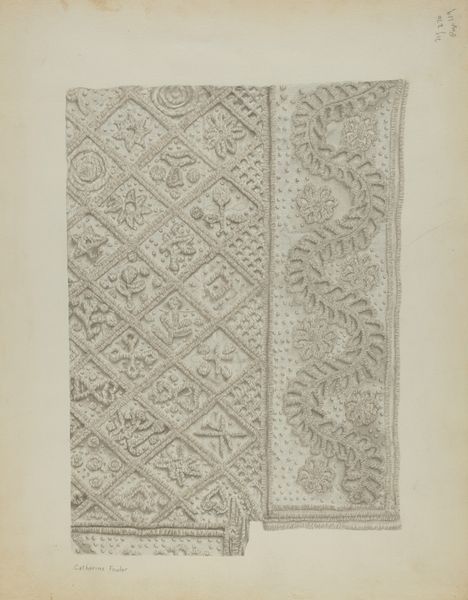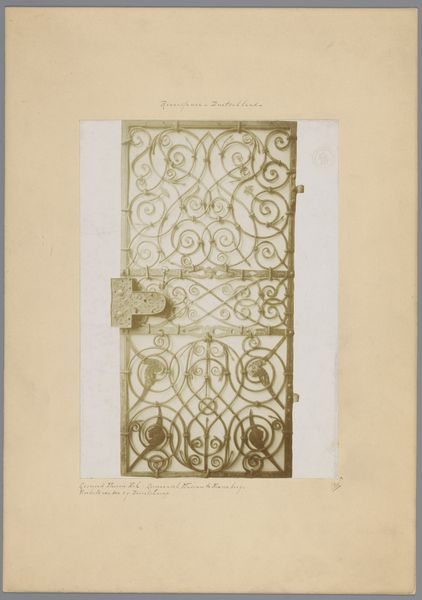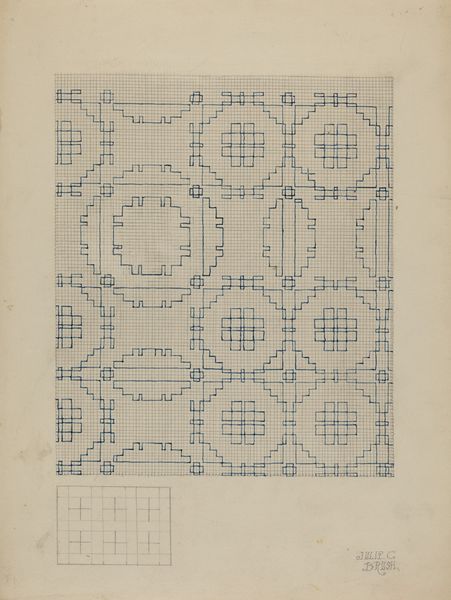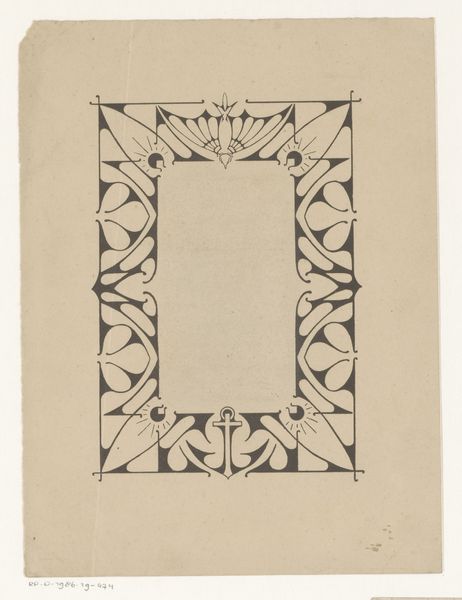
drawing, fibre-art, textile, paper, pencil
#
pencil drawn
#
drawing
#
fibre-art
#
textile
#
paper
#
geometric
#
pencil
#
decorative-art
Dimensions: overall: 29.9 x 24.7 cm (11 3/4 x 9 3/4 in.)
Copyright: National Gallery of Art: CC0 1.0
Curator: We're looking at "Hardanger," a 1937 drawing on paper with pencil, attributed to Wilford H. Shurtliff. Editor: Well, isn't that charming? It gives me the feeling of peering into a beautifully pixelated, otherworldly embroidery sample. There's something so tactile and intricate about it, even though it's just pencil on paper. It makes me think about quiet, focused labor. Curator: The work depicts what appears to be a fragment of Hardanger embroidery, a type of whitework that hails from the Hardanger region of Norway. We see meticulously rendered geometric patterns, diamond shapes interlinked. The craft's development is deeply intertwined with Norwegian cultural identity, initially developed out of practical need—to reinforce woven linen fabric, for example—and eventually evolving into a decorative practice of refined skill. Editor: Whitework… that's almost oxymoronic isn't it? Like deafening silence. I love that. And you're right, there's such patience inherent to both the embroidery itself and this… depiction of it. Imagine the hours it took to render all that woven texture with just a pencil. Curator: Precisely, this intersection of artistic media speaks to Shurtliff's engagement with the domestic crafts that became so central to twentieth century artistic debates and social movements, such as The Arts and Crafts movement and The Bauhaus movement in particular. One could suggest that the visual accessibility, the seeming modesty of rendering it only in pencil, underscores how Hardanger itself became popularized among working class communities and how skills in this field were also closely guarded trade secrets. Editor: It makes you wonder what Shurtliff thought of the original piece that he captured. Was it someone’s prized possession? Or was he just really struck by the patterns? Perhaps he just loved geometry like me. There’s something so simple yet complex about a perfect square, right? And all these beautiful rhomboids coming out of that. The composition just gives such peace of mind to me. Curator: Right, in studying a specific object Shurtliff provides insight into broader dynamics in design history, particularly the significance and labor that often lies behind deceptively "simple" forms, and the question of its position within or beyond of the 'Fine Art' world. Editor: Looking at this humble yet profound artwork certainly expands my sense for the simple pleasures, even magic, found in repetition. Curator: Indeed. And the layers of tradition embedded within its simple appearance is quite a powerful statement about this intersection of history, place and individual action.
Comments
No comments
Be the first to comment and join the conversation on the ultimate creative platform.
